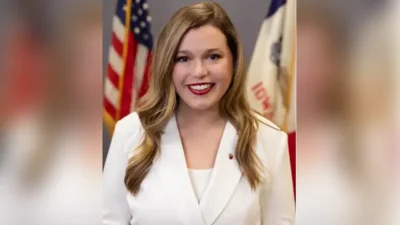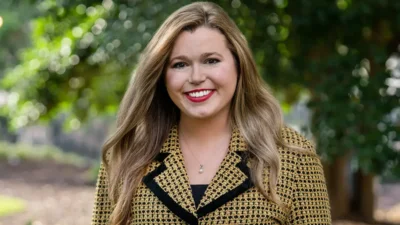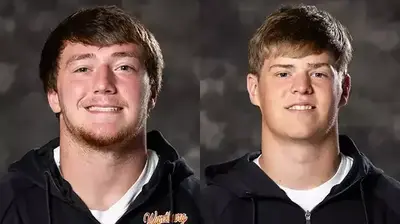Luther College issued the following announcement on September 1.
One of my favorite summer tasks at Luther is checking on the small flock of sheep that we have grazing in one of the solar fields at the college. It gets me outside, I enjoy the chance to greet Napoleon, the lovable ram who thinks he’s a dog, and it always makes me hopeful to walk among the vast rows of solar panels. Using sheep, solar powered lawn mowers, to manage the vegetation under the panels, just makes sense on so many levels.
Lately, I have been thinking that sheep in the solar field might be indicative of a larger, perhaps metaphorical, message about sustainability and a path forward. This project is a combination of something very old and traditional with something new and technological. I wonder if sustainability, charting a path forward, similarly requires the marriage of the old and the new, of traditional ways and wisdom with new techniques and technologies.
Like the old nursery rhyme, “Something old, Something new . . .” I wonder if part of the way forward depends on finding a balance between a conservative traditionalism and new, progressive ways of thinking and acting. Perhaps the key to sustainability comes in the balance of old and new. Let me explain.
Being a shepherd, tending a flock of sheep, is one of the oldest professions. Often associated with Biblical stories, sheep were one of the first animals to be domesticated, roughly 12,000 years ago. Luther’s use of grazing animals to replace fossil fuel powered machines is new, but humans have utilized sheep and other grazers for millenia to make food and fiber, as well as to manage landscapes.
The sheep at Luther continue that age-old tradition, but with a difference. These sheep are eating the grass under solar photovoltaic cells, a new and growing technology. In most places, solar is the cheapest new source of energy. Here at Luther, we have multiple solar arrays that collectively generate over a megawatt of electricity. The newest solar field, installed last year, also uses batteries to store the electricity when the sun is shining and return it to campus when the sun goes down. I contemplate our renewable energy future while checking on the sheep, timeless grazers--something old, something new.
This idea also applies to our ways of knowing. A few weeks ago, Luther hosted MEEC, the Midwest Environmental Education Conference on campus. One keynote speaker was Robin Wall Kimmerer, the author of Braiding Sweetgrass: Indigenous Wisdom, Scientific Knowledge, and the Teachings of Plants. Drawing on her Pottawatomi heritage, as well as her PhD in plant ecology, Kimmerer weaves together the old--indigenous stories and knowledge--with the new-- the latest scientific research on plants and the environment. A master storyteller, Kimmerer suggested that we seek to combine the lenses of science and indigenous knowledge to have a new and clearer perspective. The ultimate effect of such a perspective, Kimmerer argues, is both a sense of gratitude for Mother Earth’s gift and a recognition of the necessity of reciprocity between people and land.
As I look ahead to a new school year and we anticipate the arrival of students back on campus, we are thinking about ways to wed (and balance) the old and the new. This year marks the 160th anniversary of Luther College. Our traditions are strong and our commitment to the liberal arts at the core of a Luther education has never waned. But at the same time, we take seriously our mission to educate students “to understand and confront a changing society.
As we embark on this 160th year of education at Luther College, the Center for Sustainable Communities is engaging students with these questions:
- How can we learn from our ancestors and our past, so that we conserve and recover ancient wisdom and ways of being that strengthen community and maintain balance with the more than human world?
- How do we look to the future and embrace and scale the progressive technologies and ways of being that move us toward justice, equity, and environmental stewardship?
- Where is the balance between the old and the new, and how do we educate all students to seek this balance as they “serve with distinction for the common good”?




 Alerts Sign-up
Alerts Sign-up